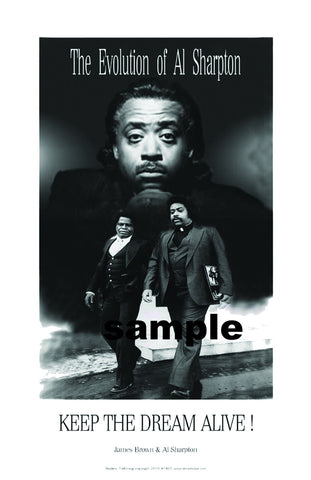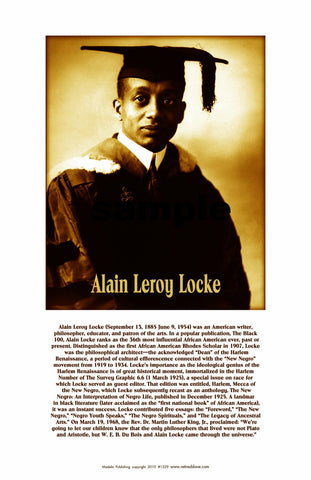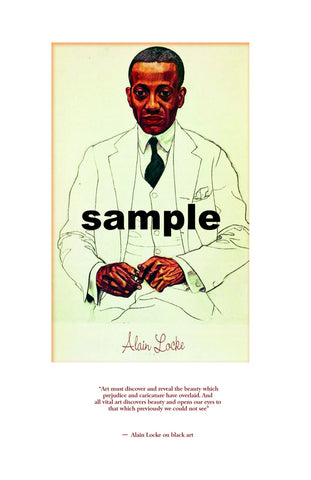Henry Ossawa Tanner # 1497
$ 8.00
Caption from poster__
Henry Ossawa Tanner
“ I believe the Negro blood counts, and counts to
my advantage though it has caused me at times
a life of great humiliation and sorrow.”
Henry Ossawa Tanner, 1859-1937, American painter, b. Pittsburgh; son of
a bishop of the African Methodist Episcopal Church. He studied with Eakins
in Philadelphia and in Paris. Tanner made many trips to Palestine to obtain
background for his religious paintings. His work is naturalistic, and the
religious subjects especially are strongly rendered. Among his paintings are
Christ and Nicodemus (Pa. Acad. of the Fine Arts); Two Disciples at the
Tomb (Art Inst., Chicago); The Banjo Lesson (Hampton Inst., Hampton,
Va.). The son of a minister in the African Methodist Episcopal Church,
Henry Ossawa Tanner was raised in an affluent, well educated African
American family. Although reluctant at first, Tanner's parents eventually
responded to their son's unflagging desire to pursue an artistic career and
encouraged his ambitions. In 1879, Tanner enrolled at the Pennsylvania
Academy of Fine Arts, wherehe joined Thomas Eakins's coterie. Tanner
moved to Atlanta in 1889 in an unsuccessful attempt to support himself
as an artist and instructor among prosperous middle class African
Americans.Bishop and Mrs. Joseph C. Hartzell arranged for Tanner's first
solo exhibition, the proceeds from which enabled the struggling artist to move
to Paris in 1891. Illness brought him back to the United States in 1893, and
it was at this point in his career that Tanner turned his attention to genre
subjects of his own race. In 1893 most American artists painted African
American subjects either as grotesque caricatures or sentimental figures
of rural poverty. Henry Ossawa Tanner, who sought to represent black
subjects with dignity, wrote: "Many of the artists who have represented
Negro life have seen only the comic, the ludicrous side of it, and have
lacked sympathy with and appreciation for the warm big heart that dwells
within such a rough exterior ." The banjo had become a symbol of derision,
and caricatures of insipid, smiling African Americans strumming the
instrument were a cliche. In The Banjo Lesson, Tanner tackles this stereo-
type head on, portraying a man teaching his young protege to play the
instrument the large body of the older man lovingly envelops the boy as
he patiently instructs him. If popular nineteenth-century imagery of the
African American male had divested him of authority and leadership,
then Tanner in The Banjo Lesson recreated him in the role of father,
mentor, and sage. The Banjo Lesson is about sharing knowledge and
passing on wisdom. The exposition-sized canvas was accepted into
the Paris Salon of 1894. That year it was given by Robert Ogden of
Philadelphia to Hampton Institute near Norfolk, Virginia, one of the
first and most prestigious black colleges founded shortly after
Emancipation. Hampton lent it the next year to Atlanta's Cotton
States and International Exposition of 1895, where it hung in the
Negro Building. Contemporary critics largely ignored the work.
Tanner painted another African American genre subject in 1894,
The Thankful Poor, but then abandoned subjects of his own race
in favor of biblical themes. When Tanner returned to Paris in 1895,
he established a reputation as a salon artist and religious painter
but never again painted genre subjects of African Americans.




